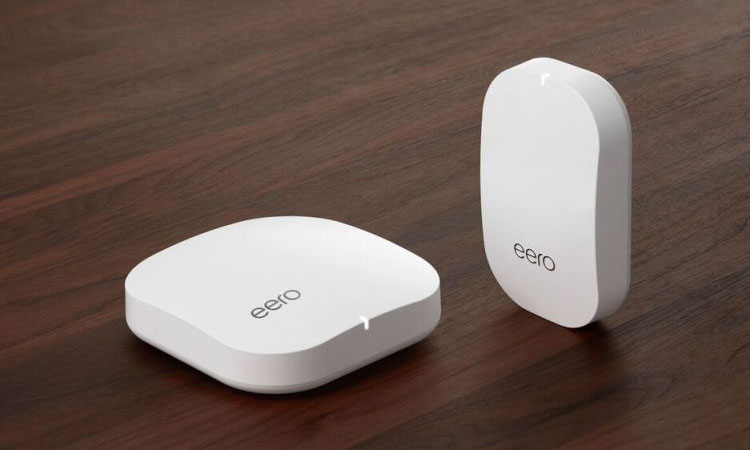Second-gen mesh-networking devices twice as fast as originals
The small startup, Eero, proved that WiFi routers didn’t need to be ugly, impossible-to-use gadgets. And now, with its second-gen of mesh-networking devices, Eero looks like they’ve changed the game again. Not only are the new Eeros faster, they’re tiny.
To be more specific, there are two new types of Eero devices. The second generation Eero looks just like the first, but thanks to a third 5GHz radio, the company said its new routers are twice as fast as the originals. On top of this, Eero is adding an additional piece of hardware called a Beacon, that works just like an original Eero node in the mesh networking ecosystem, but the Beacon half the size and plugs directly into the wall. More on the beacon in a second. Let’s talk speed, right now.
The new tri-band spec is a pretty nice upgrade from the original, dual-band Eero. If you’re not familiar with tri-band technology, you need to understand dual-band routers feature two radios: a 2.4 and a 5GHz. That means it’s compatible with older devices that only operate on a 2.4GHz signal, as well as newer ones that can handle the faster 5GHz signal. Adding a third 5GHz radio effectively adds an additional 5GHz network. So if your gaming system is slowing down one 5GHz network, your laptop can connect to the other 5GHz network to stream video without being affected by the network traffic.
In addition to the new radio, the second generation Eero base station includes an extra ethernet port, so you can plug other hardware directly into the router. (The original Eero only had one port.) The whole system features Eero’s emphasis on security, including encryption for all traffic on the Eero network, WPA-2 encryption for devices that connect to the network, and monthly security updates. It’s worth noting that these kinds of features are pretty standard on other WiFi routers, including Google WiFi, Eero’s main competitor.
Now, let’s talk about those Beacons. Whereas the original Eero ecosystem required snaking power cables up stairs and into hallways, these new nodes are about the size of a nightlight but actually extend the Eero WiFi network throughout the home using mesh networking technology. On top of all that, they also work as customIZable LED night lights that can change color and brightness based on the time of day.
To complete this year’s upgrade, Eero is also offering a new security service called Eero Plus. For $10/£7.83 a month or $100/£78 a year, Eero Plus will provide extra defense against malware finding its way into your network, namely from third party devices connected to your Eero. The advanced security feature apparently prevents devices connected to the Eero network from ‘accidentally accessing sites associated with harmful content, like malware, ransomware, and phishing attacks’, according to a release. The service also comes with enhanced parental controls and VIP support that promises to eliminate wait times any time you call the company’s support desk. This is a potentially cool perk, if you want to keep a close eye on your kids or anticipate having trouble with your new WiFi router. Otherwise, it’s unclear how useful it would be for an extra $100 a year.
The new Eero system—like the original Eero system—doesn’t come cheap. A Home WiFi System with one second-gen Eero home station and one Beacon costs $300 ( £235). You can add a second Beacon to the Home WiFi package for another $100 ( £78). (Eero’s announcement didn’t detail the cost of an individual Beacon.) A “Pro WiFi System” with three second-gen Eeros will cost $500 ( £392). You can pre-order the new Eero systems today, and they’ll start shipping in a few weeks. You’ll also be able to buy the hardware at stores like Best Buy and Walmart in a few weeks.
We’ll have to wait until we can test the new Eeros against the old one, before we can know if the new hardware really is twice as fast as the old. But the shift in hardware design from the almost-clunky original Eeros to the almost-invisible Beacons is exciting regardless of the speed. Before you know it, your WiFi router will probably just be the size of a button and fit into your pocket. That will probably happen next year if this category of gadgets keeps pace with Eero.



Comments are closed, but trackbacks and pingbacks are open.